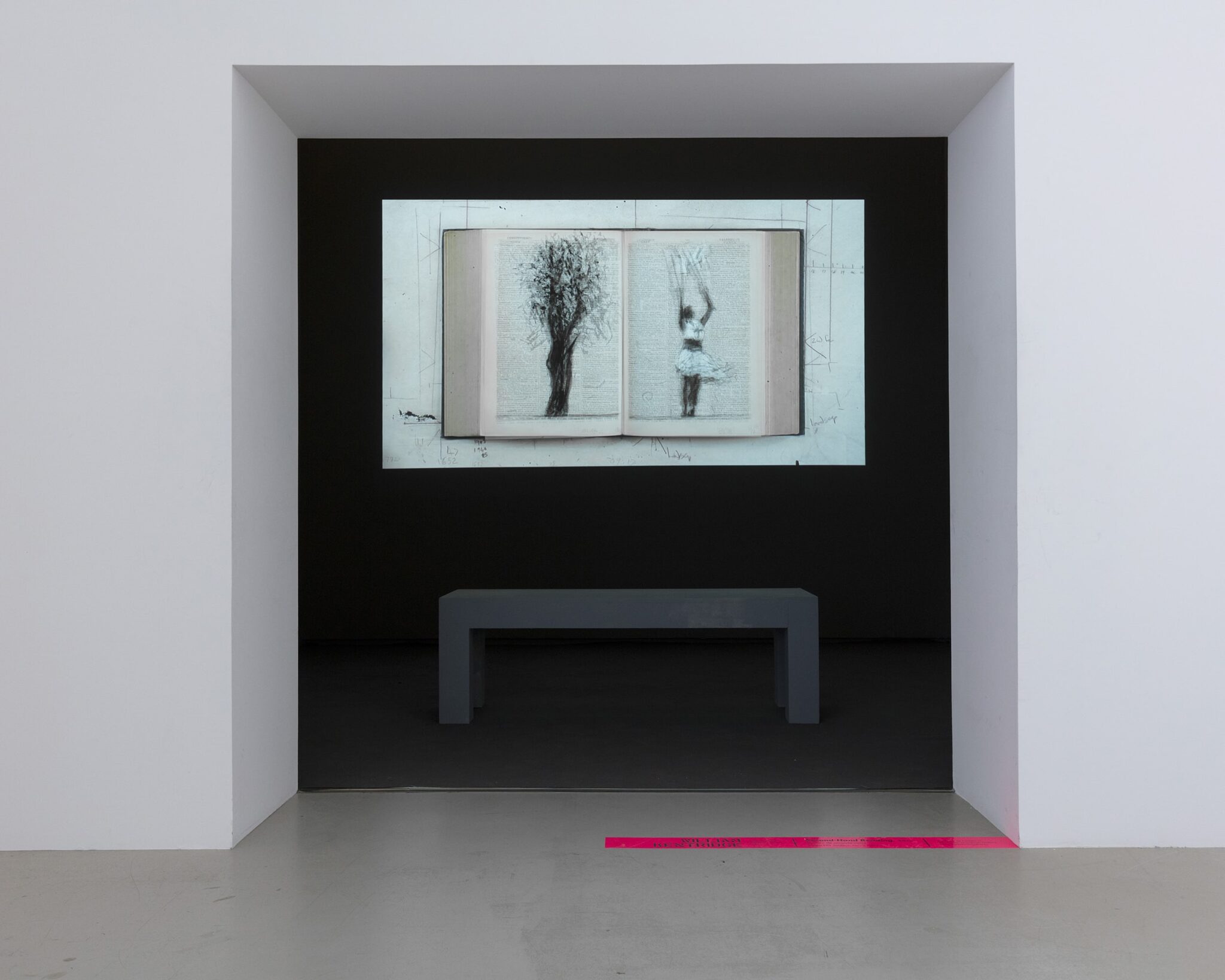
Archive magazine (2009 – 2021)
Meeting Point # 6 “How things change”
With Leslie Kaplan & Dork Zabunyan.
Leslie Kaplan’s writing has always fostered a subtle, distanced relationship with the society of consumption—its constant deviations, its sometimes-imperceptible constraints, the alienation that it constantly provokes, and on which it feeds without fail. Her position is “subtle” in the sense that, rather than condemning the harmful effects of capitalism head on, directly, Leslie Kaplan has always preferred to form a critique that interrogates the critique’s very terms—the modest yet immeasurable power of terms that have crossed the ages, words like “business”, “currency” or “work”. We have assimilated, inherited these terms to speak of the “marketing of the individual and loss of experience”, in the words of the film critic Serge Daney, cited in her “conférence interrompue” [interrupted conference] on May 68 (Leslie Kaplan, Mai 68: Le chaos peut être un chantier. Conférence interrompue, Paris, Éditions P.O.L., 2018, p. 57.).
Dork Zabunyan
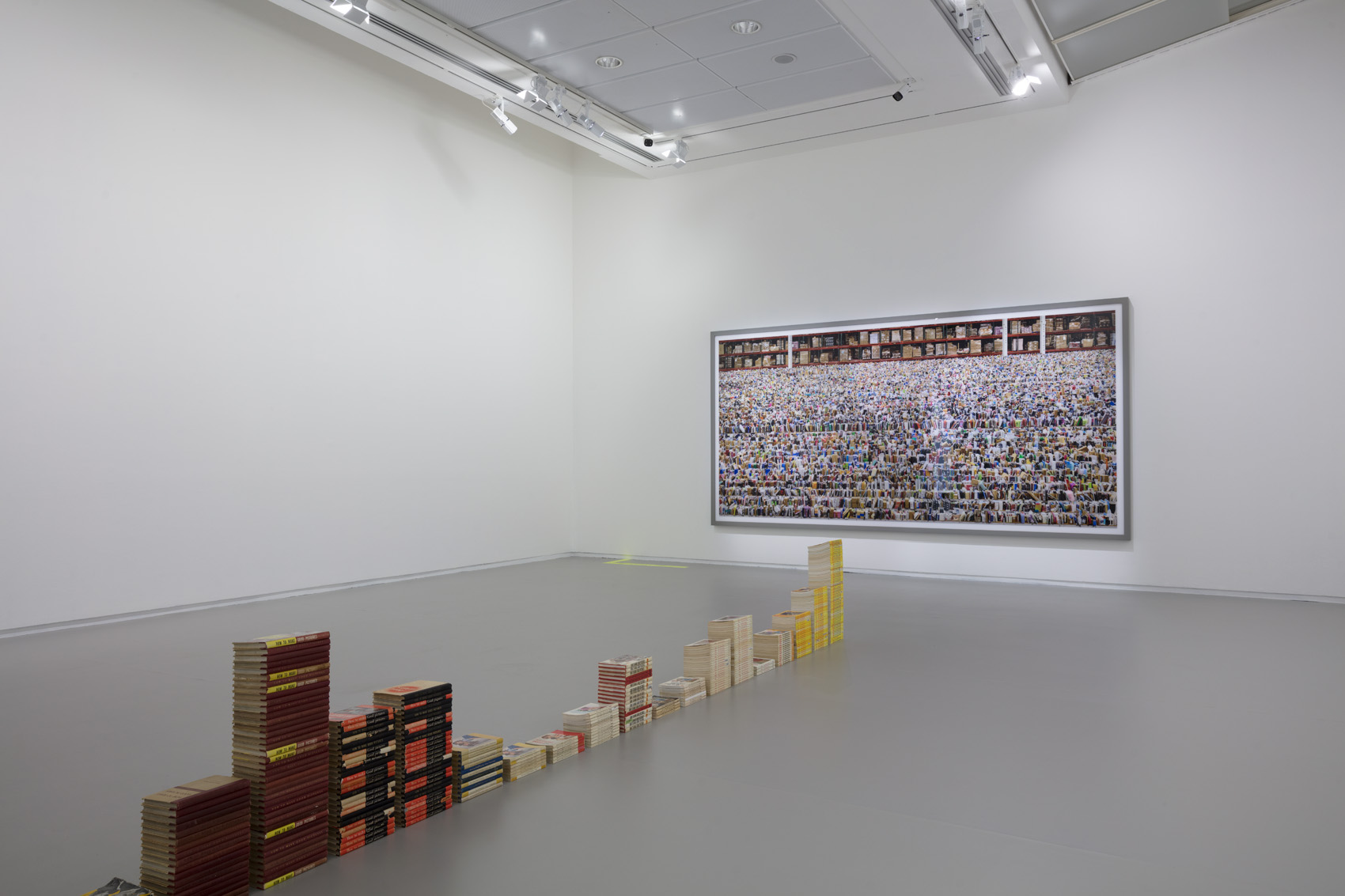
Dork Zabunyan: Leslie Kaplan, hello.
Leslie Kaplan: Hello!
DZ: Does the exhibition “The Supermarket of Images” attest to a disappearance of experience, of which the glut of images produced, exchanged and transferred is the symptom nowadays? Does it create a gap or a leap in terms of the “forms of death”—another expression taken from your “interrupted conference”—that you see in the combination of capitalism and imperialism? Following this lead, would the circulation of images at an exponential speed be one of the unexpected vehicles for these forms of death? Might an interruption of this circulation, which Peter Szendy designates by the term “iconomy of images”, fall precisely within the realm of the roles of artist practices today? Might salvation, presuming it is possible, lie in “suspens” [hiatus](( « et aussi de prendre le temps inventer un temps être dans un hors-temps un temps suspendu étrange mais palpable en mai 68, on a pu éprouver cette sensation paradoxale : un arrêt de tout, un suspens et en même temps une urgence »)), to borrow another term from your book on May ’68? These are questions we can very well keep in mind along this path through “The Supermarket of Images” in your company.
And by extension, we might gain insight into how images today, with their shadowy underbelly or in their splendor, also inspire your writing. I would like to begin with the beginning, the monumental work that greets visitors upon entering the Jeu de Paume—the fresco of images that the artist Evan Roth titled Since You Were Born. It gathers web images stocked in the memory cache of his computer since the birth of his second daughter. What were your impressions upon entering the Jeu de Paume and coming face to face with Evan Roth’s work?
LK: Good question. In fact, I think that what strikes us is the act there before us, an act that is frozen so as to become visible, to allow us to assess its impact. I think it’s a way of grabbing visitors to the Jeu de Paume by telling them, “there you go, look at all of this… that’s how it is, this is what it’s come to”. There is for me a question present throughout the exhibition, but which also transcends it: how is it possible to detach from a repetition or reproduction of the world in order to move beyond this? And this clearly overlaps with another question—that of knowing what art is, other than a certain way of pointing out, revealing, signalling or crossing over to something different, without which we would be doomed.
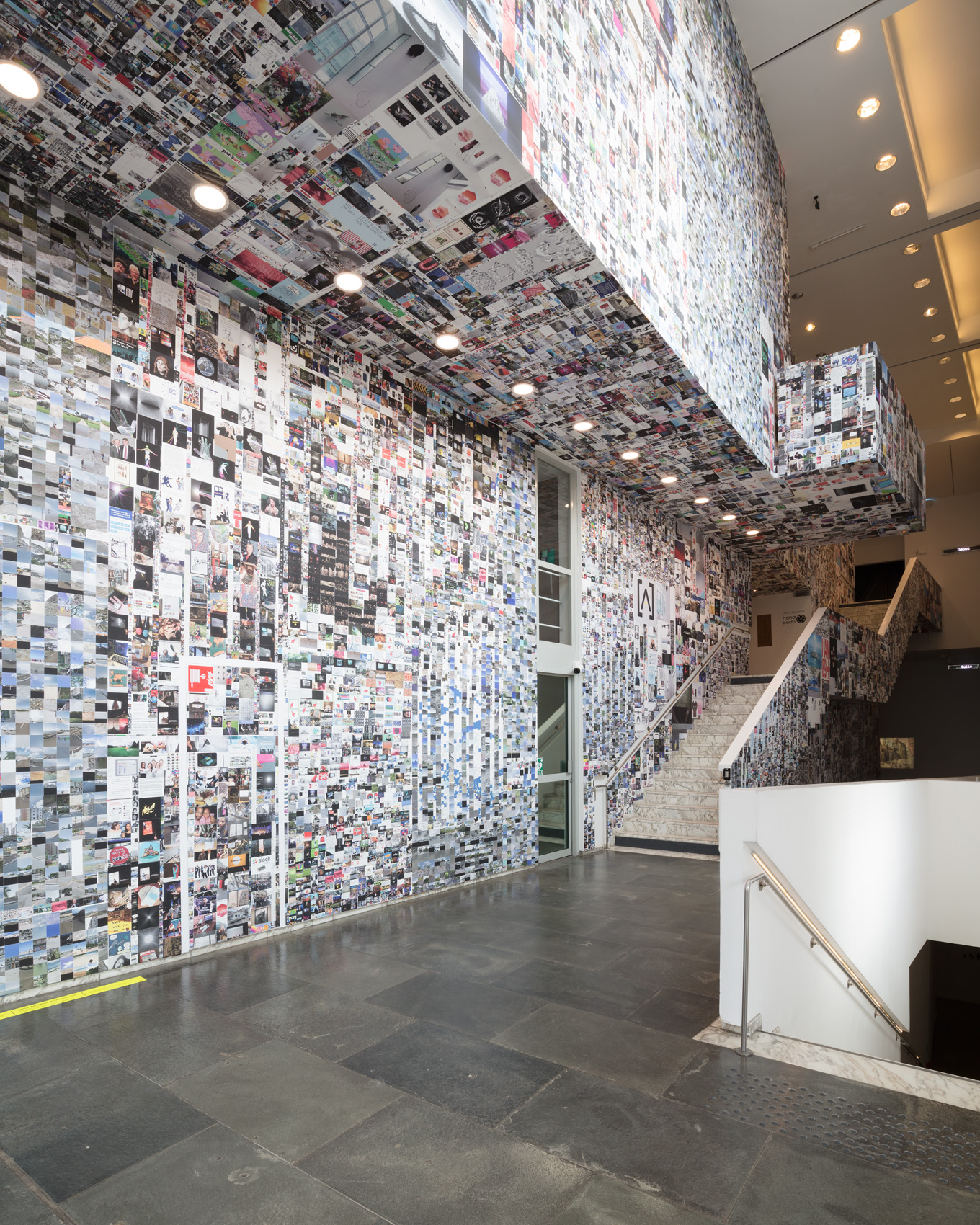
DZ: Yes, this idea of detachment, of reproduction and repetition that also creates this deluge of images we were talking about is really interesting. It’s true that Evan Roth’s work examines the accumulation of images and the possibility of escaping this overabundance. I know that accumulation is a phenomenon that interests you, featuring in Mon Amérique commence en Pologne [My America begins in Poland], another book of yours published by P.O.L. in 2009. Today, this accumulation is taking on considerable proportions. In his text for the catalogue, Peter Szendy points out that already in 2015, three billion images were exchanged daily on social networks. I’m curious about your thoughts on the representation of this accumulation. In looking at Since you were born, which fills the Jeu de Paume’s reception areas, or Andreas Gursky’s photograph Amazon, which happens to be less a feat of immersion than one of abstraction, I wonder whether we can in fact use accumulation to escape accumulation.
LK: I am tempted to say no [laughs]. I think that in fact, we are drowning in accumulation. To escape, you always need a foothold. Where’s the foothold? Where’s the point that allows you to go elsewhere, that can spark the invention of something different? But you can’t get around the fact that accumulation produces an effect—a striking effect if you sit there and think a bit about what is happening to us in the face of this. It’s interesting, it encourages us to question ourselves. But I think that this effect is limited to a degree, for me at any rate.
DZ: It’s extremely difficult to create a distance or step back from this unfocused haze that the works make apparent. This leads me to another question, based on what you were saying about something grabbing you, something striking. What constitutes a striking image, one that we remember, and which isn’t necessarily connected to a clichéd image or stereotype? When we think about a striking image, we often think about an aesthetic rooted in shock—shocking images, spectacular images. It might be tempting to respond to this question through consideration of two works by Minerva Cuevas: Silver Shell and especially Horizon II, which shows a bucolic landscape that has been plunged in tar, precisely like a denunciation of fossil fuel exploitation and its effects on the environment. Do you think that this work is capable of striking visitors’ minds and raising their awareness? Perhaps like the images of polluted oceans, referred to as “tanker toilets” in the 1970s and 80s, that also refer to a stereotype of ecological disaster.
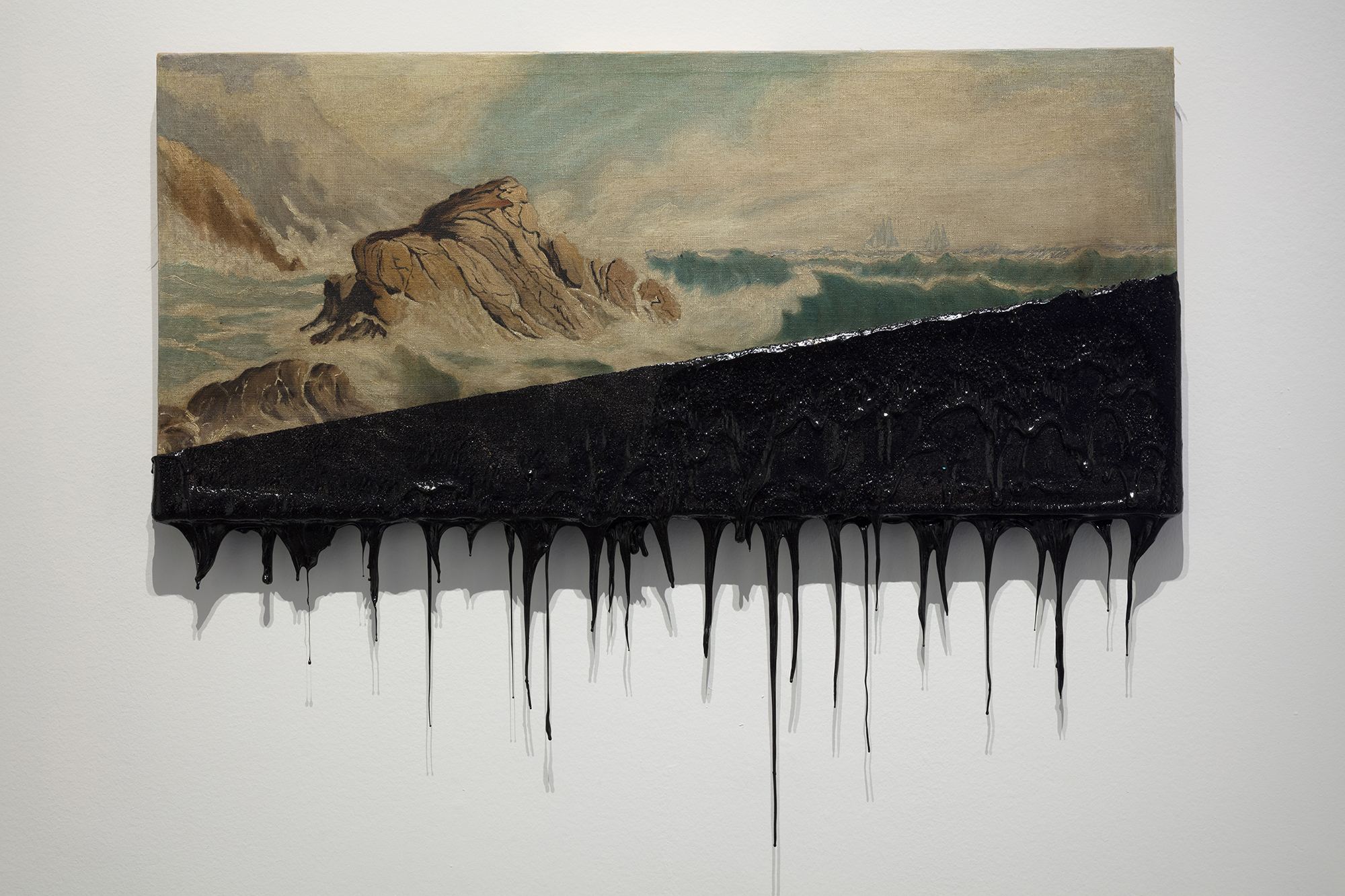
LK: An image that doesn’t start out as a cliché can become one. One image that I found really powerful, like a lot of people, was the one of the cormorants covered in oil sludge. These animals, these living creatures, were suddenly paralyzed, suffocated, which is obviously devastating. This leads me to see that the bucolic horizon and tar in Minerva Cuevas’s piece Horizon II jolted me less, and the same goes for the can in Shell. I view them as a form of repetition. It’s hard for me to say that I really find them very striking.
DZ: I propose that we continue our effort to find an image allowing for the detachment that you talk about. We could also raise the form of images subverting themselves. Could we put this subversion on par with a “hiatus” or interruption of market society that you evoke in your books? Could this hiatus reveal the material underside of the images, that which remains unseen? I at any rate find this to be a strong tendency in the exhibition, whether taking the form of Trevor Paglen’s undersea cables or Martin Le Chevallier’s Clickworkers, for example. The hiatus is produced in showing an underside that contrasts with the accumulation we started off talking about—which amounts to saying, the void.
LK: Yes. I must say that for me, it’s important in a way for everything to be contained in the image, and that what is “to the side”—i.e. an interpretation providing knowledge of what’s in the image, be it for the undersea cables or the empty rooms where “clickworkers” work—tends to impress me less that what is actually directly in the frame of the photo itself. That is what I expect from an image: for it to hold something that touches me. The work I really loved is the installation by William Kentridge, Second-Hand Reading, because it contains both a subject, himself walking, reflecting, as well as Neo Muyanga’s music, which plays a magnificent role, adding depths to the space of the photographs. And there’s really something happening, the only way I can express it is as a metamorphosis, or a series of metamorphoses. The subject of how things change is a timeless one. And I find it absolutely extraordinary, because it’s a representation of what exists—we see things, trees, birds, women gesturing, a few dance steps—and at the same time, it verges on the expression of a poetic art, i.e. that really considers the question of metamorphosis. It also makes me think of Kafka’s little figures, as Kentridge’s works certainly bring to mind those of Kafka, author of The Metamorphosis, among others. Kentridge’s Second-Hand Reading leads us in any number of directions at the same time, condensing an enormous array of different meanings with a given subject—a shifting one, at that. I find this is almost a way of saying, here’s what an image is, or what art is. For me, it’s really tremendous to see that.

DZ: It’s quite telling that you mention this specific work, given that it makes no reference to the phenomenon of endless floods of images or a deluge of visual signs, within the exhibition’s general economy.
LK: William Kentridge shows how images change, are able to change, turn into something else in the mind of a person in the midst of thinking about any number of things. There’s a back-and-forth between phrases and images. It’s not at all a reproduction of images through words or vice-versa, but more of a correspondence, as Baudelaire wrote. And I find this idea interesting to set forth the question of images once again, because the idea of accumulation or the mass of images alone doesn’t really provide any departure, to borrow a word from Kafka: how to escape this, find a way out? I think that using accumulation as a starting point is a way of getting bogged down, rather than creating openings.

DZ: It’s interesting to turn to a work like Kentridge’s to question what an image is, when this video installation itself holds a somewhat specific position within the exhibition. It doesn’t coexist with other works in the space, and doesn’t really contribute to the blurring happening in this exhibition between the images deemed as art and those that aren’t. It’s not a question of re-establishing a hierarchy between art and non-art, it’s just that I observe that this coexistence fades around Kentridge, and I wondered whether this distinction interests you or not? I think it’s one of the issues raised by the exhibition, which we can pursue or criticize. The exhibition proposes a flattening of the hierarchies among image regimes, and blurs the boundary between artistic images and images that might be categorized as vernacular, or something not belonging to the realm of art, at any rate—the distinction between high and low, noble and base, and so on. As an author, is this flattening of hierarchies among image regimes problematic for you, or to the contrary, is it something that applies to your work with words?
LK: Look, my criteria is always the same: emotion. What I mean is, if an image strikes me, moves me, brings me somewhere, it doesn’t matter where it comes from. And for example, I don’t know whether it’s noble or not, high or low, but there are images, photojournalistic images, for example, that move me. I find certain images absolutely tremendous in their ability to show something; they reveal something, of course. And that’s what’s important to me in an image, what it reveals to me. So, I’ll perhaps abstain from referring to family photos here, but I’m thinking of images that aren’t quote-unquote artists’ images. In a nutshell, I’m not terribly concerned with questions of labels.
DZ: I know that you also go to the movies frequently, and that film is important to you. In the exhibition, there’s the trailer for Robert Bresson’s film L’Argent (1983), and, in the form of an installation, Labour in a Single Shot, a veritable encyclopedia of work gestures by Harun Farocki and Antje Ehmann. With these works as our starting point, I wonder about the position held by film in your work as a writer. Is the montage of images comparable to your work putting together sentences and giving them order? Is there a similarity or correspondence (you referred to Baudelaire earlier) between film and your work as a writer?
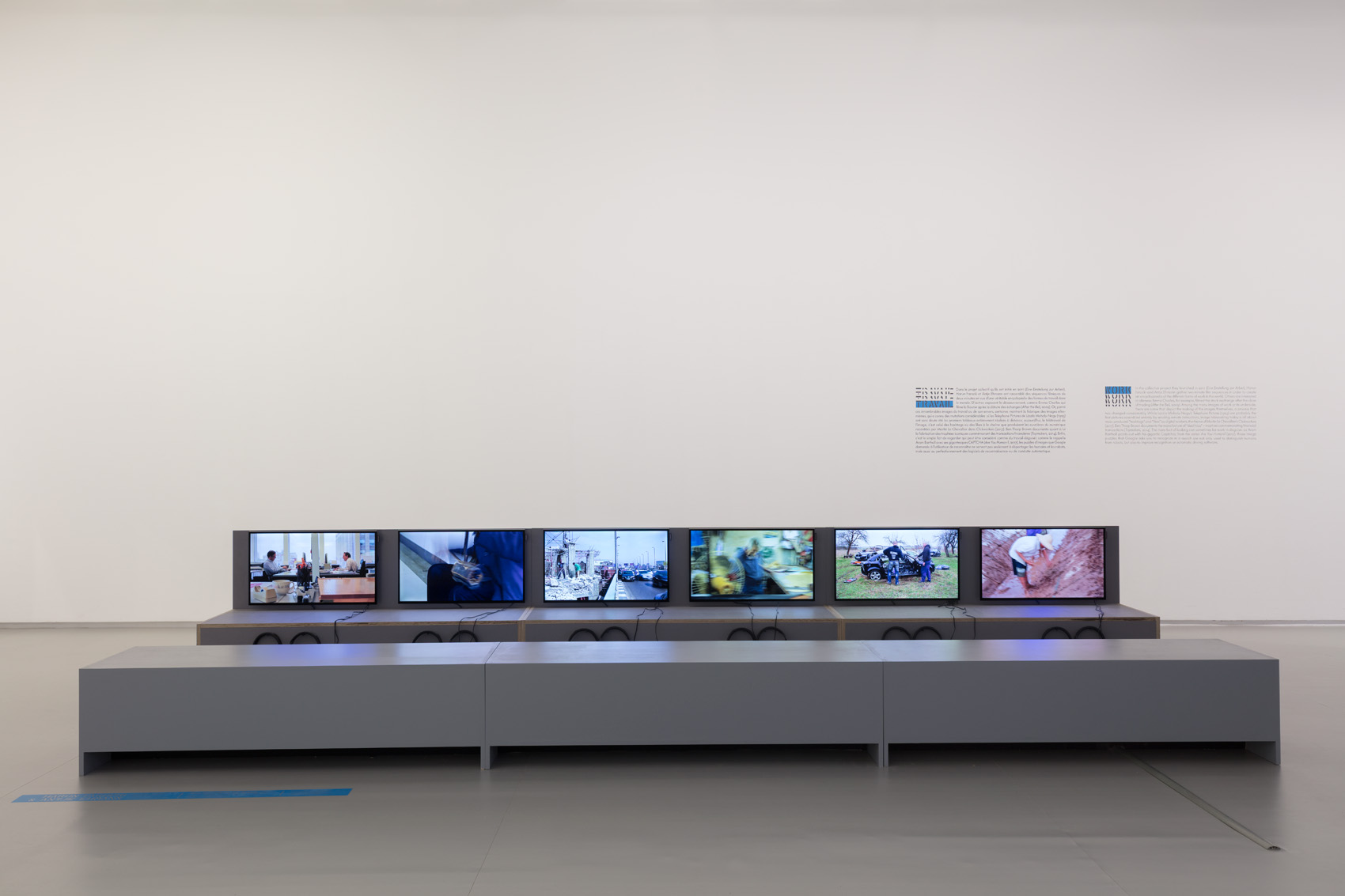
LK: You know, it’s complicated to talk about our influences, influences that at times we’re subjected to. I went to the movies all the time as a kid. My parents were huge cinephiles. It’s something that’s deeply a part of me, just like all of the books I’ve read. And yes of course, I’m absolutely sure that it played a role. I’ll touch on the question of film editing—the process of cutting, interrupting, stopping and starting again, organizing. We’ve left the classic linear structures of the 19th century behind. Cinema has certainly played an extremely important role in my work, or at least a certain type of cinema, let’s say the cinema that I’ve loved. I’m also thinking of Chaplin, not only for the humor and his overtly comic side, but for the way it’s put together. That obviously had to play a role, and continues to do so.
DZ: I have one last question for you about the relationship to an experience dear to you, and that you also recount in your writings—I’m thinking in particular of Mathias et la Révolution (2016): the experience of walking in the city. Urban space is really important for you, whether through walking, rambling or roaming, not even necessarily as Situationist practices. And if we get back to the path through the exhibition, in a previous Meeting Point, Peter Szendy called for an experiment in phrasing, with ellipses and contrasts in the exhibition for “The Supermarket of Images”, which is a continuation of his book The Supermarket of the Visible. I will raise this question by mentioning temporal rhythms, because as you gradually move across the space, you move across what’s been produced over time, knowing that urban rhythms also change according to the emergence of new means of circulation in the city. I find it important that the exhibition features a work that is rarely talked about: La Vue Lumière. A view shows a mobile platform that could very well be imagined at the exhibition entrance, in parallel to the circulation of images installed by Evan Roth. I’d like to know what position urban walking holds in your work, and ask you if, when you visit an exhibition such as “The Supermarket of Images”, this experience of the city is physically present for you?
LK: Yes, that’s a good observation you make: I really love walking in the city, and I also really loved the path through the exhibition. I do think that there’s a sense of—I didn’t think about it in the moment—something like a path through a city of images perhaps, or something like that, and which is very pleasant, with bifurcations, stops, etc. I really took my time and was happy to do so. It was highly enjoyable to stop, think, see… At any rate, that’s how I like to go through exhibitions as a rule. It wasn’t too crowded the day I went, which also plays a role. It was really nice.
DZ: Very well, thank you so much, Leslie Kaplan! We’re also going to try to see the exhibition once again with you, with its bifurcations, interruptions and various flows. Thank you once again.
LK: Thank you!
Translation : Sara Heft, 2020
The Supermarket of images
Peter Szendy – Auscultating images
